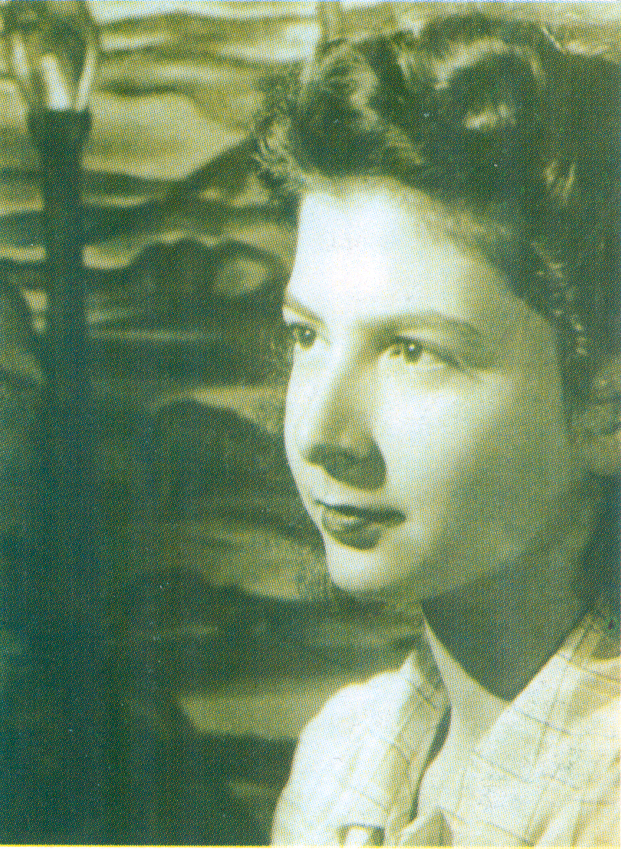
The first time the public got acquainted with the works of Inji Efflatoun was the year 1942, in the midst of WWII. She was eighteen years old and took part in the third exhibition of Independent Art held at the Continental Hotel in Cairo organized by the surrealist collective known as al-Fann wa-l-Hurriyya or the Art and Liberty Group. Heralded as the biggest surprise of the exhibit and the youngest artist amongst all twenty-four exhibitors, Efflatoun ‘set up her imaginary world around a bird of dreams and the heavyweight of the void.’
Her participation launched the first period of her career as a surrealist painter when she presented works depicting a young girl trying to rebel, escape, discover herself, and seek to break free from all sorts of chains – social, patriarchal, colonial, etc. Predominantly autobiographical, the works were a reflection of Efflatoun’s personal life. The content translated into canvases that were awkward and uncommon in an environment highly dominated by classicism.
Born in Shobra in 1924 to a family of large landowners, Efflatoun grew up in a cellophane-wrapped aristocratic society, dealing with the various help at her home and mingling with the cosmopolitan bourgeoisie. The isolation was such that she could only speak French until the age of eighteen.
When Efflatoun was fourteen, the pioneer modernist painter Mahmoud Saïd (1897-1961) saw her illustrations for various fictive stories written by her elder sister Gulperie (Boulie). He urged Efflatoun’s mother to nurture her daughter’s talent with the help of a good artist-instructor. The family hired the then-surrealist painter and vanguard leftist thinker Kamel Telmisany (1915-72) to give ‘the bourgeois girl’ private lessons in 1941 for two pounds a month. The encounter with Telmisany was a turning point in Efflatoun’s life. A signatory of the manifesto “Ash al-Fann al-Munhat” [Long Live Degenerate Art] in 1938 and a co-founder of the cultural collective Art and Liberty in 1939, Telmisany not only introduced the francophone high school student to painting techniques but more so, to the meaning of art and the misery of life outside of her isolated society.
A second turning point in Efflatoun’s life occurred in 1944 when she became a member of ISKRA (ash-Sharara), one of two prominent and underground communist organizations. Her militant efforts were geared towards the national struggle, democracy with its pillars for progress and social justice, the annihilation of ‘retarded’ reactionaryism, and the feminist cause when she ultimately became a militant advocate of women’s (political, economic, and legal) rights. Dealing with a double life, she fully immersed herself into ordinary Egyptian society to the degree that she married Hamdi Aboul Ela (1923-1957) in 1948, a fellow communist and a prosecutor, ‘the son of neither a pasha nor a bey,’ but from a humble background.
Her exposure to people’s struggles and involvement with the Communist Party greatly influenced her direction as an artist. She produced a series of social expressionist paintings of and about Egypt(ians). Charged with nationalistic fervor and tackling subjects of resistance, social justice, and women’s rights, Efflatoun painted Go; You are Divorced (1952), The Fourth Wife, They Work like Men, al-Mukawma al-Nissay’iyya al-Sha’biyya and We Will Not Forget (1951), the latter depicting the martyrs of the Suez Canal protest. As such, she throve to depict the simple man, ‘his reality and dreams, as he struggles to make ends meet, working in miserable conditions with no rights and no laws to protect him.’
Despite the communist party being outlawed and the Egyptian socialist movement being destroyed by the mid-1950s to serve the military officers’ interests and survival, Efflatoun continued to operate, on the fringes, under the nickname Anan. This is why in 1959, she went undercover for three months disguised as a fellaha / peasant (see Self-Portrait painting) since women were no longer spared by the government of the new president Gamal Abdel Nasser. Eventually, Efflatoun was arrested during a massive crackdown for her stance against the establishment and imprisoned for four years from June 1959 to July 1964 with other members from the left-wing intelligentsia.
After her release from prison in 1964, Inji Efflatoun began the fourth and final stage of her painting career. Stylistically different from the previous three periods, it forged a more liberated mode of narrating Egypt and its people. The paintings remained thematically consistent, reiterating Efflatoun’s devotion to the humble people. They honor the workers, the fishermen, the builders, the fellahin, and the stunning (rural) environments in which they live Sinai to Upper Egypt.
Efflatoun also published three books where she adamantly voiced her call to annihilate reactionaryism, patriarchy, and colonialism: 80 Million Women With Us (1948), We, The Egyptian Women (1950), and Peace and Evacuation (1951). But if there is one trait that we must remember about Inji Efflatoun, then it must be her incredible sense of humor that transcribes so visibly throughout the pages of her post-mortem memoirs: Muzakirat Inji Efflatoun (1993).